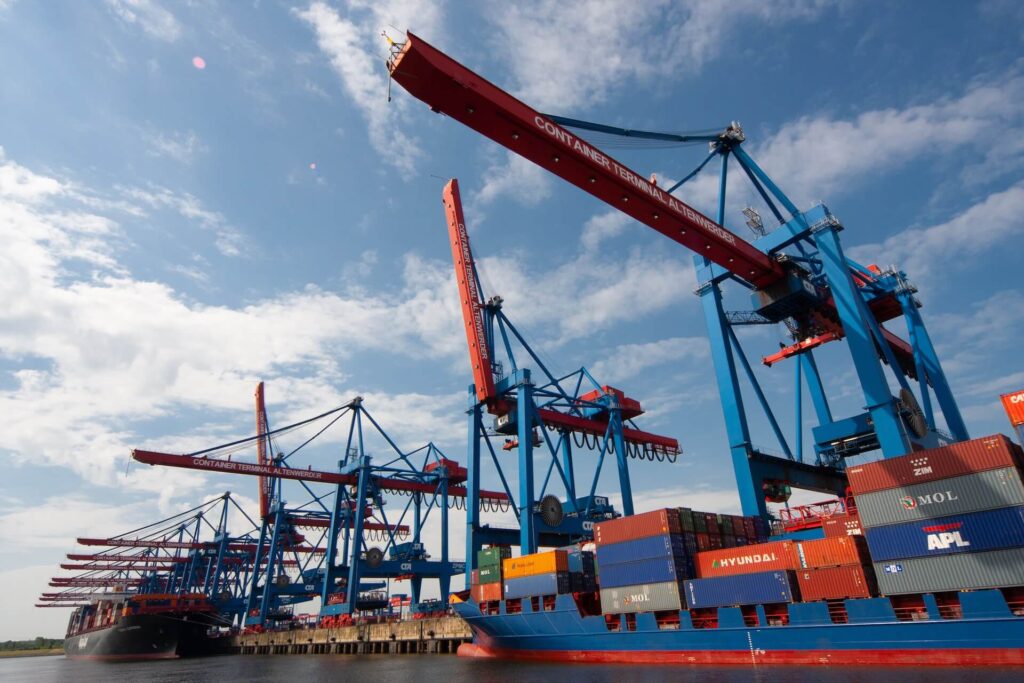Every country around the globe participates in international trade in one form or another.
It’s a complex ecosystem that exists beyond political borders, with multiple factors influencing its dynamics.
One key influence is the implementation of world trade policies, which can dramatically alter the landscape of everything from technology to agriculture.
Amongst various sectors, the produce industry is remarkably influenced by these policies.
In this context, it is important to scrutinize the profound effects that can be caused by shifts in global trade pacts.
In order to understand the changes in produce trends, it is necessary to examine the role of these policies, and how they directly and indirectly reshape the agricultural sector.
Contents
- The Impact Of Global Trade Policies On Produce Trends
- How Do Tariffs Affect the Produce Market?
- The Impact of Quotas on Agricultural Sector
- Sanctions and Their Effect on Produce Availability
- How Do Trade Agreements Influence Produce Trends?
- Key Effects of Policy Changes on Agricultural Practices
- Final Thoughts
The Impact Of Global Trade Policies On Produce Trends
Global trade policies significantly impact produce trends by influencing the availability, pricing, and variety of products in the market. Tariffs, quotas, and sanctions can restrict imports and exports, thus affecting the global distribution and impacting consumer choice. Additionally, trade agreements and policy changes can modify cultivation practices and stimulate transition to sustainable farming methods.
Delving deeper into this topic, it’s imperative to address how these policies shape the landscape of agriculture innovation and the dynamics of food security.
As we proceed, we’ll explore how the push and pull of international politics not just influences the market, but also steers the direction of research and development in the agri-food sector.
Drawing from a blend of case studies and expert insights, we’ll gauge the far-reaching effects of this interaction between global trade policies and produce trends.
The next sections will browse through relevant real-world applications of these phenomena, their implications on the changing global food systems, and potential strategies for mitigation given a challenging policy environment.
These discussions could provide invaluable perspectives to policy makers, industry stakeholders, and the individual consumer.
Let’s delve further in to understand these nuances.
What are Global Trade Policies?
Global trade policies refer to the rules and regulations that govern the exchange of goods and services among countries.
These policies serve as guidelines that determine how countries engage in international trade.
They are formulated and implemented by both international regulatory bodies, like the World Trade Organization (WTO), as well as national governments.
Trade policies are instituted to ensure fair and balanced trade practices among trading nations.
Impact on the Economic Environment
Global trade policies have profound influences on the economic environment.
The altering of trade policies can lead to significant implications for the economies of countries, as well as for the international economy as a whole.
They affect currency exchange rates, economic growth, and the quality of life in a region.
Especially with policies such as tariffs and quotas, countries can protect their domestic industries from foreign competition or stimulate economic activities.
Global trade policies have profound influences on the economic environment.
This influence is evident in how trade policies can alter the economic landscape.
For instance, imposing high tariffs on imported goods can make these items more expensive, thereby promoting the consumption of locally produced goods.
Changing Dynamics of Global Trade
With the evolution of the global economic landscape, trade policies have also undergone significant changes.
Advances in technology, liberalization of economic policies, and the creation of regional trading blocs have significantly impacted how trade policies are formulated and implemented.
These changing dynamics can greatly influence industries, including the produce industry.
Understanding these changes is crucial for businesses to adapt and thrive in the evolving international commercial environment.
Trade Policies and Sustainable Development
Global trade policies can also influence sustainable development as they affect the flow of goods and services, and consequently, the allocation of resources.
They can be used to promote sustainable practices, like controlling the export or import of environmental hazardous materials.
Understanding global trade policies is critical in today’s interconnected global economy.
They have a significant impact on international business operations, domestic economies, and the reach of sustainable development goals.
How Do Tariffs Affect the Produce Market?
In the world of global trade, one vital element is tariffs.
Tariffs are import taxes that governments implement on goods and services from a foreign country.
The Basics of Tariffs
A tariff can serve various purposes, but it is typically used to protect domestic businesses and jobs from foreign competition.
For instance, if a country’s domestic apple industry is struggling because of cheaper imports, the government might impose a tariff on imported apples.
This would increase the price of the imported apples, making the domestic apples more competitive.
The domestic apple industry would then thrive, preserving jobs and local businesses.
In this way, tariffs can be a valuable tool for a government looking to protect its domestic industries.
This example emphasises how a tariff can sway the market in favor of domestic products by artificially increasing the price of imported goods, which in turn boosts the competitiveness of domestic goods.
Impact of Tariffs on the Produce Market
However, tariffs have a more complex relationship with the produce market in reality.
Most notably, they can cause the prices of goods to increase for consumers.
The borderline between protecting domestic interests and preventing healthy competition from foreign entities remains a delicate balance for governments.
High tariff rates could lead to a reduction in the variety of goods available for consumers, as it discourages importers and overseas manufacturers from doing business in the local market.
A diverse produce market, which ensures a broad range of fruits and vegetables are available year-round, is heavily reliant on imports and exports.
An overly-protected market can inadvertently limit consumer choice and increase prices of goods, fostering an unhealthy business environment in the long run.
Tariffs and International Trade Relationships
Moreover, tariffs can have repercussions for a country’s international trade relationships.
If a government imposes high tariffs, it might prompt other countries to retaliate with tariffs of their own.
Such actions can lead to a trade war, causing detrimental effects on global economy and international relations.
Thus, while tariffs can protect domestic industries, their influence on the produce market and international trade is far from strictly beneficial.
The fluctuations seen in tariffs can directly impact the costs of production, operation and ultimately, consumer prices.
In essence, tariffs can serve double-edged roles in the push and pull of international economics.
The increasing or decreasing tariff values can cause ripple effects in the price and availability of goods, domestic and international relationships, and the sustenance of local industries.
Balanced trade policies are thus needed for a healthier global economy.
The Impact of Quotas on Agricultural Sector
Trade quotas are a common policy tool that governments use in order to regulate and control the number of goods imported or exported within a given time frame.
These trade quotas can have a significant impact on the agricultural sector due to its sensitivity to market fluctuations.
Quotas, in essence, act as a control mechanism, ultimately limiting the amount of a certain product that can enter or leave a country.
The usage of quotas often leads to a reduction in supply when they limit imports of certain agricultural products, such as wheat or corn.
Benefits of Quotas
In some cases, quotas can serve as protective measures for domestic farmers.
They can ensure a certain market share for domestic products, thereby shielding local farmers from international competition.
Quotas can serve as protective measures for domestic farmers, ensuring a portion of the domestic market and providing a level of protection against international competition.
This protective feature of quotas serves to provide a stable environment for domestic agricultural sectors
Restricting imports can also lead to an increase in domestic prices, ultimately resulting in higher incomes for farmers.
This helps to alleviate rural poverty and improve food security within a nation.
Negative Impact of Quotas
Despite these benefits, the implementation of trade quotas can result in negative outcomes.
Reducing the supply of imported goods can lead to an increase in domestic prices, negatively affecting consumers, especially those living in poverty.
One of the most notable ones is that reducing the supply of imported goods can lead to an increase in domestic prices, thereby negatively affecting many consumers, particularly those from low-income groups.
This price uplift reflects a transfer of income from domestic consumers to local producers, hence generating a level of income inequity.
On the production side, trade quotas can discourage innovation and efficiency among local farmers, as they do not have to strive for competitiveness due to the protection provided by the quotas.
International trade disputes are often linked to quotas as well, creating a volatile and uncertain business landscape that can deter investments into the agricultural sector.
Sanctions and Their Effect on Produce Availability
Trade sanctions are a common tool that countries use to influence the policies and behavior of others.
Sanctions can take various forms such as economic, military, or political.
In the context of global trade, economic sanctions affect one of the primary sectors of an economy – agriculture.
The overall effect of trade sanctions on produce availability can be direct or indirect.
It directly discourages or disallows the export or import of specific goods.
This outcome affects the overall quantity and types of produce available in a market.
The Direct Impact of Sanctions
When a country faces economic sanctions, its agriculture sector may bear the brunt of the impact.
These effects manifest in decreased agricultural productions, crop failures, or altered planting decisions which ultimately affect the availability of produce.
Farmers may decide to switch crop types or reduce production levels if they begin to face economic hardships due to sanctions.
This shift leads to a decrease in produce availability.
Therefore, a change in production capacity results in a change in the availability of produce in the local and international markets.
Indirect Influences of Sanctions
Apart from the direct influences, trade sanctions also indirectly affect produce availability.
They contribute to unstable economic climates that discourage investment in agriculture and generate inflationary pressures.
This economic uncertainty can lead to fewer farming operations, decreased agricultural investment, and consequently, a less diverse and less abundant produce market.
Trade sanctions contribute to unstable economic climates that discourage investment in agriculture.
The assertion that unstable economic climates discourage agricultural investment is corroborated by a study from the United Nations Conference on Trade and Development.
It noted a significant decrease in the agricultural sector’s market growth rate in countries that had been subjected to trade sanctions.
The cascading effect of sanctions on produce availability can also lead to higher food prices, increased food insecurity, and potentially famine.
Poor households are particularly vulnerable, as they spend a higher proportion of their income on food.
In this way, the indirect effects of trade sanctions on produce availability can be far-reaching and exacerbating for all strata of the population.
Case Study: Cuba’s Produce Availability
A case study that illustrates the effects of sanctions on produce availability is Cuba.
The U.S. imposed a trade embargo on Cuba in the early 1960s.
Over decades, the sanctions have shaped the Cuban agricultural sector.
Post-embargo, the country faced a severe reduction in the availability of agricultural imports, leading to a crisis in produce availability.
The sanctions have shaped the Cuban agricultural sector.
Post-embargo, the country faced a severe reduction in the availability of agricultural imports.
Despite the crisis, it spurred adoption of locally sustainable and innovative farming methods like urban and organic farming.
Though, it is clear that the impact on produce availability was significant in the immediate aftermath of the embargo.
This case demonstrates the complexity of sanctions’ impacts, touching not just on produce availability, but also environmental sustainability and resilience of agricultural systems.
How Do Trade Agreements Influence Produce Trends?
The global produce industry is invariably influenced by existing trade agreements.
Such pacts have a considerable bearing on production trends, distribution strategies, and pricing within the agriculture sector.
Now, trade agreements, essentially, are treaties signed between two or more nations to foster economic cooperation.
They primarily aim at reducing barriers to trade, such as tariffs and quotas, that hamper the swift exchange of goods and services.
If you think about it, the agriculture sector, especially the produce industry, often receives keen attention in these agreements.
This is due primarily to the essential nature of food commodities and their direct link to food security, population health, and national economies.
The Impact of Trade Agreements on Production Trends
From small-scale farmers to multinationals, everyone involved in agriculture tailors their production strategies to align with the terms of existing trade agreements.
Rather than producing just for domestic markets, producers often expand or limit their crop range based on the incentives and limits set forth in these agreements.
Trade agreements can stimulate the production of specific crops while disincentivizing others, drastically affecting agricultural trends.
Such shifts in production are often a response to economic opportunities provided by access to new markets or to avoid levies imposed on certain goods.
For example, a nation with a trade agreement advantage for soy might see a boost in soy cultivation as farmers capitalize on favorable export terms.
Distribution Strategy Modifications
Trade agreements also greatly influence distribution strategies within the produce industry.
Changes in tariff policies can make it more lucrative for companies to distribute their goods in foreign markets rather than domestic ones.
When a trade agreement eliminates or reduces import tariffs, produce companies often adjust their distribution strategies to target those markets.
Such strategy modifications are primarily driven by the prospects of higher profits and increased market penetration.
These distribution shifts can lead to significant changes in the produce trends within a country, with the potential for certain fruits or vegetables to become more prevalent than before.
Price Fluctuations Due to Trade Agreements
Trade agreements also have a significant impact on produce pricing.
A reduction in tariffs usually results in lower retail prices as companies can then afford to pass on the benefits to consumers.
However, if an agreement favors the import of cheaper produce, domestic products may face stiff competition, potentially leading to price fluctuations and even market instability.
Trade agreements, while aimed at promoting fair global trade, can have complex effects on the produce industry.
Their impact is pervasive, directly influencing production trends, distribution strategies, and pricing in the agricultural sector.
Understanding how these agreements shape the global produce market is crucial for farmers, agri-businesses, and policy-makers.
Key Effects of Policy Changes on Agricultural Practices
Global trade policies can significantly influence agricultural practices around the world.
Their influence has grown particularly along with the increasing need to integrate sustainability into agriculture.
A clear example of this is seen in the shift towards organic farming facilitated by specific policies.
Policy changes leading to sustainable practices
The pressure on countries to adopt sustainable farming practices, is in part, a product of changes in global trade policies.
This is because these policies can often provide incentives or penalties aimed at promoting sustainability.
The introduction of a tariff or quota on non-sustainably produced goods, for example, can make it economically inviable to persist with harmful traditional farming practices.
Such policies therefore encourage a transition towards more sustainable practices.
In this context, global trade policies become a mechanism for driving agro-environmental change at a large scale.
They encourage producers to adapt and innovate, improving the economic viability of sustainable farming practices.
Influence of Global Trade Policies on Organic Farming
The rise of organic farming can also be linked to global trade policies.
Trade policies have facilitated the growth of the organic sector by creating favorable conditions.
Many policies now contain provisions to promote organic farming, such as certification schemes and trade agreements, which expressly support the trade of organic products.
Such policies enable organic farmers to access larger markets and price premiums, making organic farming a more attractive proposition for farmers.
This has also encouraged more farmers to transition towards organic farming practices.
Impact of Policy Changes on Farmers
Changes in trade policies affect not only the type of agricultural practices but also the livelihood of farmers.
Farmers are directly affected by policy changes, as they influence the price they receive for their goods, the cost of inputs, and access to markets.
Therefore, farmers need to constantly adapt to policy changes.
While these adaptations can be challenging, they can also provide opportunities for farmers to innovate and improve their farming practices.
Ultimately, the impact of policy changes on agricultural practices is complex and multi-faceted, affecting many different aspects of agriculture and farming livelihoods.
Final Thoughts
Based on the overarching themes discussed, it is apparent that trade policies significantly influence the international produce market.
Essential factors such as tariffs, quotas, and sanctions have the power to dictate not only the availability and cost of produce but also the ongoing trends and practices within the agricultural sector.
These global trade policies directly shape the dynamics of the produce industry, from farm to table, emphasizing a strong impact on farming methods, including organic farming.
Consumers inevitably feel these impacts, forcing them to adapt their purchasing habits based on policy-driven changes in the market.
Existing examples, such as produce shortages due to trade disruptions, offer a deeper insight into the labyrinthine predicament of global trade policies.
Looking ahead, the future of the produce industry hinges heavily on the outcomes of ongoing trade policy negotiations, highlighting the imperative need for balanced and fair conventions that stabilize the market while fostering conducive agricultural practices.




















